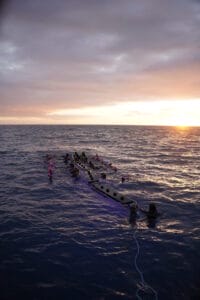The World Atlas on the importance of protecting the deep sea. Join us on the Hoku Nui for an environmentally friendly and fun experience in the waters of the west coast of Kona.
The dark world of the deep seas has shown light in many fields of scientific research. Although only 1% of the seafloor has been explored by us, the knowledge gained as a result of this exploration has revolutionized concepts of species adaptation, survival, and evolution. There are many more mysteries of the deep sea left to be discovered and it holds great potential for driving innovations in the field of science.
Intrinsic Value Of The Deep Sea
Scientific Value Of The Deep Sea
The depths of the ocean also holds the key to answer a plethora of questions related to evolution and adaptation of life forms on the planet. Life forms found in the hydrothermal vents on the ocean floor have shown light on the origin of life forms on Earth. It is believed that the earliest life forms evolved in environs similar to those found in the ocean’s hydrothermal vents. Here, there is no oxygen but only hydrogen sulfide is available for use as an energy source. The temperature of the water is extremely high and there is absolutely no light. The bacteria found here use hydrogen sulfide, a gas that would kill all other life forms, and use it to synthesize energy. The bacteria form the basis of the food chain in this ecosystem.
The special adaptations and unique features of the deep sea creatures are also extremely valuable to science. For example, features like bioluminescence, camouflage through bioluminescence, unique feeding habits, symbiotic relationships, etc., are important areas of research for scientists to understand many biological and other natural phenomena that also affect or may be useful for human life. For example, the deep-sea dragonfish is famous for its transparent teeth that are believed to be stronger than that of piranhas’ teeth. A study of the teeth of these dragonfish has revealed that they are covered with nanoscale-sized crystal particles that make the teeth both transparent and sharp. Scientists are now studying the composition of these crystals that might help develop new synthetic materials that are both transparent and highly strong.
Despite its great significance to humankind, the deep sea is under threat. Indeed, the least explored part of the planet has also not been spared by us. Today, the deep-sea ecosystems and its fauna are facing several issues arising due to human action. These are as follows:
Destructive Fishing Practices And Overfishing
The increased greed for fish on the menu has depleted fish populations in oceans across the world. Today, overfishing and destructive fishing practices have greatly decreased fish populations in the coastal and epipelagic zones of the ocean. Instead of stopping at this and allowing the populations to recover, humans have now started delving deeper and deeper into the ocean in search of fish in these layers. The result is disastrous.
Deep-sea fish have lower populations than those in the upper layers of the ocean. The extremes of conditions in their habitat mean they need to conserve energy to perform vital physiological functions to survive. Hence, deep-sea organisms grow slowly and attain sexual maturity at a late stage. Thus, when fishing is conducted in the deep waters, it wipes out populations much faster than near the surface. Also, deep-sea fishing usually takes place in the high seas where there is little to no regulation of fishing and hence, it becomes easier for the dishonest to carry out fishing in an unregulated manner. Knowing that as much as 40% of the world’s fishing grounds are now in waters deeper than 200 m, the scale of destruction by such fisheries can well be imagined.
Bottom trawling is now considered to be the most dangerous threat to deep-sea biodiversity. Giant bottom trawlers crush everything in their path on the sea bed through which they are pulled and trap all kinds of marine life inside their death trap. The result of such indiscriminate fishing is visible all around the world today. For example, 90% of the surfaces that earlier harbored coral in the heavily-fished coral seamounts off southern Australia are now completely bare.
Deep-Sea Exploration For Oil, Gas, And Minerals
It appears that humans would not stop without depriving the oceans of all life and that is evident from the recent trends observed in oil, gas, and mineral exploration and extraction. Previously, such activities were restricted to offshore drilling and mining in shallow coastal waters on the continental shelves. After emptying the ocean inside out, the companies associated with such activity are now moving further inside into the deep ocean where they want to spread the death trap of their activities for greater monetary gain. Experts believe that such activity is bound to have devastating effects on the fragile, deep-sea communities.















